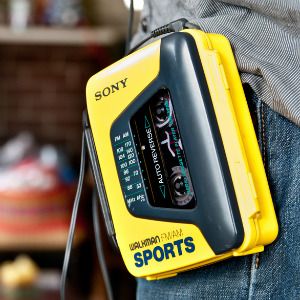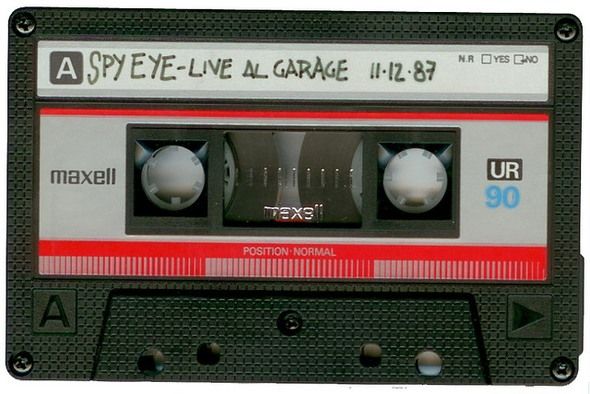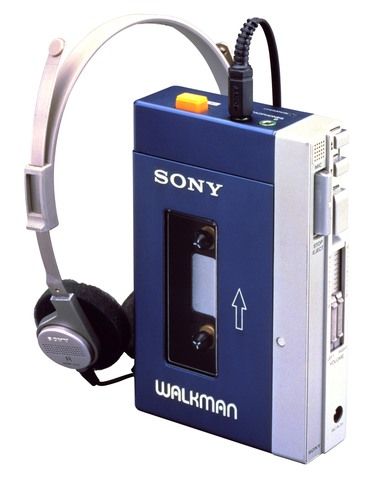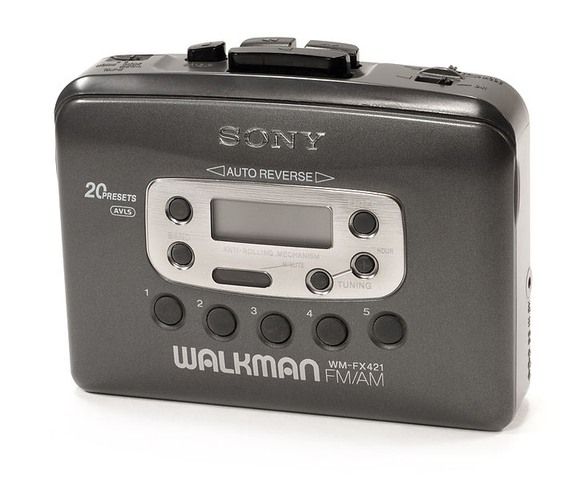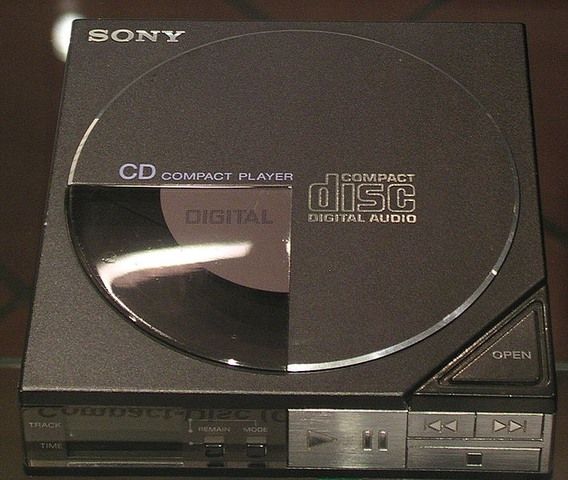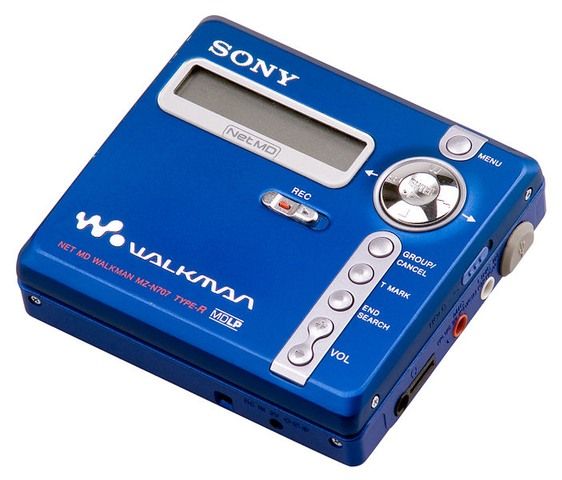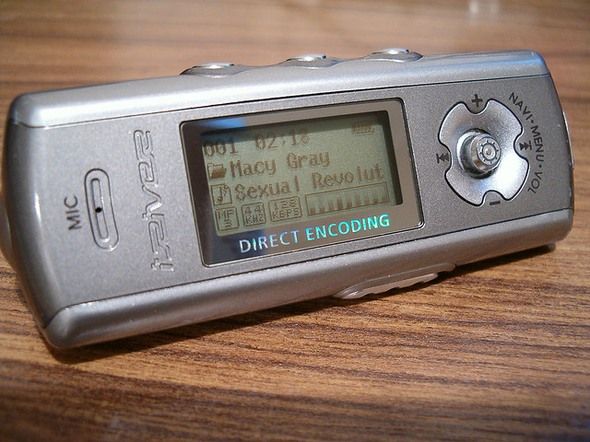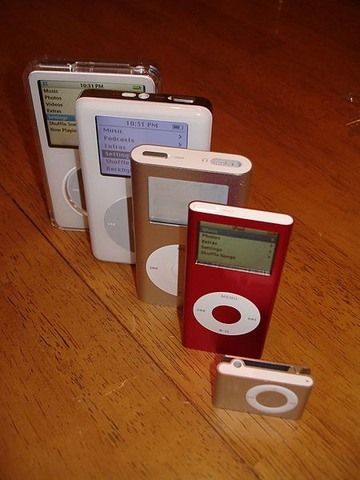Your children will never know what it’s like to have the batteries on a personal cassette player start to run out, as the music slows by a noticeable couple of BPM and Bruce Dickinson’s vocals on your Iron Maiden compilation begin to wane. Heck, your children probably won’t listen to Iron Maiden (mine will, it will be heavily enforced).
In the age of streaming media, digital everything and repeated shunning of physical media, the way we consume music continues to evolve. The path we’ve taken thus far has been long, expensive and many lessons have been learned. If you’re too young to remember the Sony Walkman, this article is for you.
If you fondly remember a time of mixtapes and recording music off the radio, this article is for you too. You might just feel nostalgic enough to dust off your old collection of <insert 80s/90s band> cassettes (or maybe not).
Cassettes & The First Personal Stereo
In order to trace the history of personal audio, it seems fitting to first explore the foundations of the technology that made it possible for Sony et al to redefine your listening habits with headphones and portable players. The humble compact audio cassette was a product of the Philips corporation who in 1962 created and 1963 licensed free of charge for audio use. It was to become one of the main dominant formats for listening to and storing music and remains to this day the last mass produced analog audio format.
The first personal stereo to use this technology was the fruit of Andreas Pavel’s labour, known as the Stereobelt. In 1972 he first pressed the play button on his invention to begin a recording of “Push Push” by Herbie Mann and Duane Allman, a feeling he described as “floating”. In 2003 Sony finally settled a long-standing patent dispute with Pavel, who finally got his pay-out and the title he’d wanted for so long: the inventor of the personal stereo.
The Sony Walkman Legacy
Despite Pavel being the initial inventor of the personal stereo, and more to the point the personal cassette player, it was Sony who first took the product to market under the guise of a low-cost portable stereo. Initially marketed as the Walkman in Japan, the Soundabout in the US and the Stowaway in the UK, Sony’s personal player virtually introduced the global public to the concept of listening to music on-the-go using lightweight headphones.
The first model was the TPS-L2, a metal-cased blue and silver design that boasted features like stereo playback and dual 3.5mm jacks. It came with a basic pair of Sony headphones and took 4 AA batteries (though could also run off mains power via 6v adapter). The Walkman soon grew in popularity sparking Sony to release several more models, including the Walkman Professional in 1982 which saw the addition of recording capabilities. Featuring recording level meters and manual control over input volumes, the Professional soon became a go-to tool for journalists, songwriters and anyone who wanted near-professional quality recordings on cassette.
In October 2010 Sony officially stopped manufacturing cassette Walkman units in Japan, though production continues in China and the US for limited markets. The cassette Walkman’s decline can be partly blamed on emerging technologies, notably Sony’s replacement - the Discman. Known as the CD Walkman in Japan (and in 2009 this name was adopted worldwide), the Discman was the first portable CD player on the market when it was released in 1984 only 5 years after the original Walkman.
As anyone who has ever used a portable CD player (particularly an early one) will tell you, these units were prone to skipping. The original Discman CD players had absolutely no jog protection, which meant one had to be particularly careful while handling it. Later models featured Sony’s ESP anti-jog protection which stood for Electronic Skip Protection. The technology pre-read the CD so as to write its contents to a memory buffer, measured in seconds. Later Sony changed the name to G-Protection, and eventually the high-end players were classed as “jog proof”. Eventually the Discman lines were upgraded to play CD-Rs with raw MP3 files on them, as well as Sony’s proprietary ATRAC codec.
With the original Walkman dying out, and the Discman still climbing in popularity, some were surprised when Sony introduced a new format - the MiniDisc - in 1992 which eventually outshone Philips’ upcoming Digital Compact Cassette technology. The format was immensely popular in Japan, though global sales didn’t quite reach what Sony might have hoped beyond the motherland. The technology used small cartridges that contained discs which initially used the ATRAC compression codec, but later advanced to include raw CD quality recording.
To many, myself and fellow writer Christian included, the MiniDisc was a great format thanks to being scratch proof, jog proof and head-and-shoulders above the abysmal quality of the MP3s floating around file sharing services at the time. The format has been discontinued now, but you can still buy MiniDiscs for the moment.
The Digital Audio Player
In 1997 the first mass-produced digital audio player – or MP3 player as the device was to become known – was created by South Korean firm Saehan Information Systems. It went on sale the year after as the MPMan, where it was rebranded as the Eiger MPMan for the North American market. The device had a fixed flash memory size of 32MB, enough for about 6 songs depending on length and quality.
In the years that followed MP3 players became all the rage as the Internet became a household phenomenon and more and more computers were sold to consumers. The world’s first hard-drive digital audio player followed in 1998. Manufactured by Compaq and used a 2.5” laptop hard drive, the technology was licensed to HanGo Electronics and featured a capacity of 4.8GB and went on sale in 1999. It wasn’t long before nearly every electronic manufacturer started manufacturing an MP3 player, with some dedicated brands like Diamond (Rio), iRiver and sound card manufacturer Creative giving it a go, all with varying levels of success.
The iPod Legacy
Announced by Apple in September 2001 and on-sale the following month, the first iPod was a 5GB capacity white and silver box with a mechanical scroll wheel that required Mac OS 9 or X (10.1) and iTunes to transfer music via FireWire only. There was no Windows compatibility initially, and on the second released version of the iPod Apple released two versions - one that came with iTunes of Mac, and one that came with Musicmatch Jukebox for Windows. Finally in October 2003, six months after the iPod 3G, iTunes for Windows surfaced and the iPod really started picking up traction.
http://www.youtube.com/watch?v=kN0SVBCJqLs
Upon realising it was on to a good thing, Apple released several more variants in the iPod line starting with the flash-only iPod Mini in 2004 which introduced the “clickwheel” that Apple still use today. The Mini was replaced by the Nano (which has since seen seven revisions) and joined by the screen-less Shuffle in 2005. Both of these models are still available for sale, alongside the iPod Classic which serves as a dedicated hard disk player and aside from a few capacity tweaks has been unchanged since 2007 and continues to be sold today.
Apple’s latest addition to the iPod line (which, with the convergence of devices into do-it-all boxes of joy might be the last) is the iPod Touch, introduced in 2007. It was the first iPod with a multi-touch interface, Wi-Fi and a web browser and ran Apple’s (then) brand new mobile operating system, iOS. The iPod wasn’t just a simple, well-branded device but the digital equivalent of Sony’s original Walkman. This led to many believing Apple was indeed the first to attempt such a thing, when in actual fact the technology had been on the market years before Cupertino were ready for a release.
Dumbphones, Smartphones and iPhones
The aforementioned convergence of technology has long been a trend, and the first mobile phone – now affectionately termed dumbphone – with an MP3 player arrived in 2001 in the form of the Siemens SL45. The phone was also the first to feature expandable memory via an MMC slot, making it an incredibly advanced bit of kit for 2001. In the years that followed nearly every manufacturer followed suit, and Sony even used their historic Walkman brand on a range of Sony Ericsson phones designed with portable MP3 playback in mind.
http://www.youtube.com/watch?v=TWSRgsk2oaw
In 2005 Motorola and Apple made history when Steve Jobs took to the stage at a special event in San Francisco to reveal the Motorola Rokr, the first phone to be compatible with iTunes, which in hindsight is an odd partnership considering Apple was already working on its next big thing a year earlier - the iPhone. In 2007 it was ready, and Apple’s iPhone was released with iPod capabilities, Safari and the ability to run proprietary apps. With the release of Android the year later, the modern mobile world we now live in had its foundations.
http://www.youtube.com/watch?v=0KfrSzyXmiw
Over the next 5 years services like Spotify (established in 2006) and Grooveshark (in 2007) set their sights on the mobile market. Spotify has arguably been the most successful of the mobile streaming services thus far, having initially debuted its first mobile app on the Android operating system at Google I/O in May 2009 with the official release of the iPhone version in August 2009. This allowed for both the streaming of music from the service over 3G connections and offline sync of playlists, with Grooveshark shunned on iOS but using emerging HTML 5 technology to circumvent Apple’s (and anyone else’s) restrictions.
And for the future... well we’re probably going to see a lot more lossless music delivered to our devices as network infrastructure improves and storage capacities continue to increase. I will leave the real speculation to you, where you can add your thoughts, reminisce and argue about formats past and present in the comments, below.
Image Credits: Intro Image (Ham Hock), Cassette (David Zellaby), iRiver MP3 Player (Mark Micallef), Various iPods (Chris Harrison)

